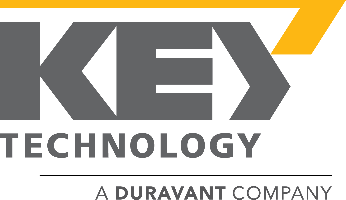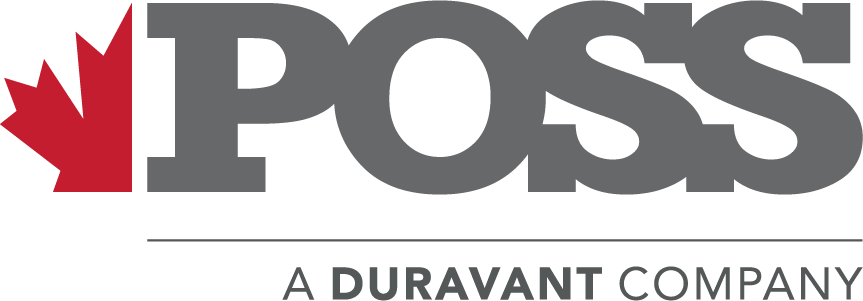The Duravant family of operating companies serve the food processing, packaging and material handling segments.
Maximizing Efficiency: The Rise of Reusable RFID Tags in Inventory Management - 2023 Data Insights
In recent years, the logistics and inventory management sectors have witnessed a significant transformation with the emergence of Reusable RFID Tags. According to a 2023 report by Grand View Research, the global RFID market is projected to reach $40 billion by 2027, driven largely by advancements in tagging technologies and a growing emphasis on sustainability. Reusable RFID Tags not only enhance tracking accuracy and operational efficiency, but they also contribute to reducing waste, aligning with the increasing demand for eco-friendly practices in businesses. As more organizations adopt RFID solutions, McKinsey's studies indicate that companies can improve inventory accuracy by up to 30% while decreasing labor costs by approximately 15%. This surge in adoption highlights the shifting paradigms in inventory management and the pivotal role of Reusable RFID Tags in maximizing efficiency and sustainability across various industries.
The Evolution of RFID Technology: From Single-Use to Reusable Tags
The evolution of RFID technology has significantly transformed inventory management practices. Initially, RFID tags were designed as single-use items, often discarded after their initial application. However, advancements in technology have led to the development of reusable RFID tags, offering businesses a more sustainable and cost-effective solution. By allowing multiple uses, these tags not only reduce waste but also enhance data accuracy and operational efficiency.
Tips for transitioning to reusable RFID tags include proper tagging of each item and developing a standardized process for their retrieval and redeployment. Ensure your staff is trained on the care and maintenance of these tags to maximize their lifespan. Additionally, consider integrating a robust RFID tracking system that can effectively manage the logistics of reusable tags, ensuring they are always accounted for and in optimal condition for future use.
Moreover, rethinking your inventory processes to accommodate the flexibility of reusable RFID tags can lead to significant cost savings over time. Brands that adopt these innovative solutions are likely to see improved traceability of products, reduced labor costs, and increased inventory turnover rates, ultimately driving better business performance.
Cost-Benefit Analysis: How Reusable RFID Tags Save Money in Inventory Management
The adoption of reusable RFID tags in inventory management offers significant cost-saving advantages for businesses. As companies increasingly focus on sustainability and efficient resource management, reusable tags present a viable option to reduce overall expenses. By minimizing the need for disposable tags, organizations can lower their procurement costs and reduce waste, thus aligning with environmental goals while enhancing their bottom line. The upfront investment in reusable RFID technology can be recuperated through consistent use over time, making it an economically sound choice for inventory management.
The global returnable transport packaging market is forecasted to reach $25.25 billion by 2025 and continue to grow at a CAGR of 4.35% to $35.5 billion by 2033. This growth underscores the increasing importance of recycling and reuse in supply chains. Reusable RFID tags play a pivotal role in this evolution by enabling better tracking and management of inventory. As logistics become more complex, leveraging such technologies not only helps in optimizing operations but also contributes to substantial savings in operation costs, resulting from diminished losses and enhanced asset utilization.
Real-World Applications: Success Stories of Reusable RFID Tags in Various Industries
The implementation of reusable RFID tags has brought transformative changes across various industries, as evidenced by several success stories that showcase their real-world applications. In the retail sector, major chains like Walmart have utilized these tags to streamline inventory management processes. They have noted significant reductions in stock discrepancies and improved stock visibility, allowing for a more efficient replenishment process. By leveraging reusable RFID tags, retailers not only save costs but also minimize environmental impact, marking a significant shift towards sustainable practices in supply chain management.
In the healthcare industry, hospitals have begun adopting reusable RFID tags to enhance patient safety and operational efficiency. For instance, tags are placed on equipment and medication, allowing for real-time tracking and management. This advancement has led to a reduction in lost items and errors related to medication administration, ultimately improving patient outcomes. Additionally, in the manufacturing sector, companies are employing reusable RFID tags to monitor production lines more effectively. This initiative has resulted in more precise inventory tracking and reduced downtime, demonstrating the versatility and effectiveness of RFID technology across various operational landscapes.
Maximizing Efficiency: The Rise of Reusable RFID Tags in Inventory Management - 2023 Data Insights - Real-World Applications: Success Stories of Reusable RFID Tags in Various Industries
| Industry | Annual Savings ($) | Efficiency Improvement (%) | Return on Investment (ROI) | Implementation Duration (Months) |
|---|---|---|---|---|
| Retail | 150,000 | 30 | 300% | 6 |
| Manufacturing | 200,000 | 25 | 250% | 8 |
| Logistics | 300,000 | 40 | 400% | 5 |
| Healthcare | 120,000 | 20 | 150% | 7 |
| Agriculture | 180,000 | 35 | 280% | 9 |
Best Practices for Implementing Reusable RFID Tags in Your Inventory System
Implementing reusable RFID tags in inventory management can significantly enhance operational efficiency and reduce costs. According to the latest data from GS1, companies that adopt RFID technology experience an inventory accuracy of over 95%, as opposed to traditional methods, which average around 75%. This dramatic increase not only minimizes stock discrepancies but also streamlines the replenishment process. To capitalize on these benefits, organizations should ensure that their RFID systems are integrated with existing inventory software, allowing for real-time data synchronization and improved decision-making capabilities.
Best practices for implementing reusable RFID tags begin with thorough training of personnel. Research from Zebra Technologies shows that 61% of organizations consider employee training a crucial factor in maximizing RFID system performance. Additionally, selecting durable RFID tags designed for multiple uses can lead to significant cost savings. The Accenture 2023 report highlights that lifecycle management of tags can lower operational expenses by up to 30%. Combining these strategies can optimize inventory processes and foster a culture of continuous improvement in inventory management systems.
Maximizing Efficiency: The Rise of Reusable RFID Tags in Inventory Management
This chart illustrates the percentage of businesses reporting improvements in efficiency after implementing reusable RFID tags in their inventory systems in 2023.
Future Trends: The Next Innovations in RFID Technology and Inventory Efficiency
The future of inventory management is poised for transformation with the continued advancement of RFID technology. Predictions indicate that the ultrahigh-frequency RFID market, valued at $762.26 million in 2024, is expected to escalate to approximately $1.43 billion by 2032, reflecting an impressive compound annual growth rate (CAGR) of 8.3%. Such growth underscores a significant trend towards efficiency, driven by the innovative applications of RFID, particularly in sectors like retail, where it has been a catalyst for operational advancements.
As the retail industry gears up to lead the RFID revolution by 2025, other sectors, including healthcare, are also experiencing the transformative power of this technology. The application of medical RFID has significantly reduced errors in healthcare settings, resulting in improved patient safety and streamlined operations. Additionally, the integration of artificial intelligence and logistics is further optimizing inventory management, showcasing a holistic approach to utilizing technological innovations. These trends reflect a dynamic landscape where RFID technology is not just an enhancement but a necessity for efficient inventory management and operational excellence.











